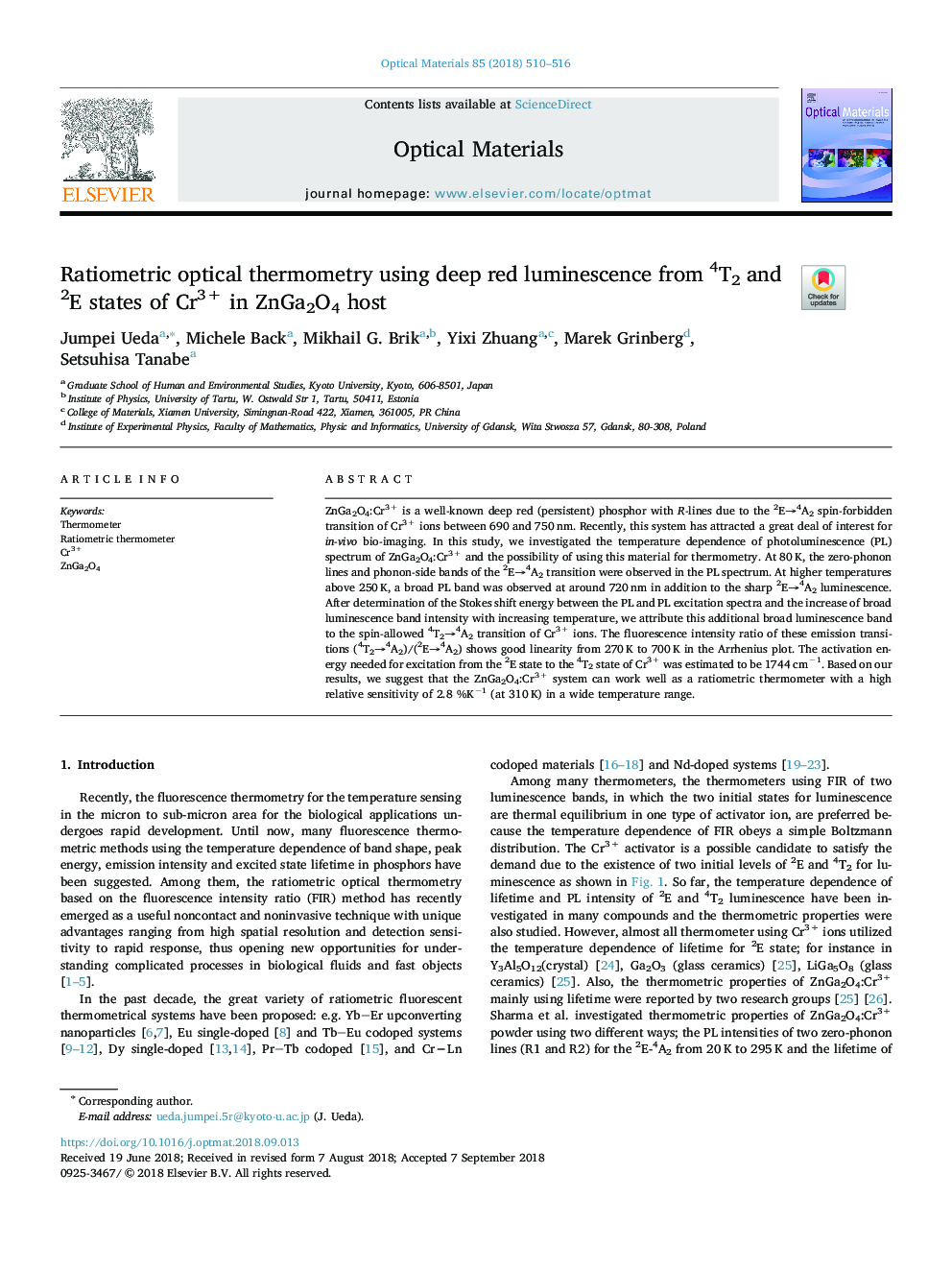| Article ID | Journal | Published Year | Pages | File Type |
|---|---|---|---|---|
| 11032803 | Optical Materials | 2018 | 7 Pages |
Abstract
ZnGa2O4:Cr3+ is a well-known deep red (persistent) phosphor with R-lines due to the 2Eâ4A2 spin-forbidden transition of Cr3+ ions between 690 and 750â¯nm. Recently, this system has attracted a great deal of interest for in-vivo bio-imaging. In this study, we investigated the temperature dependence of photoluminescence (PL) spectrum of ZnGa2O4:Cr3+ and the possibility of using this material for thermometry. At 80â¯K, the zero-phonon lines and phonon-side bands of the 2Eâ4A2 transition were observed in the PL spectrum. At higher temperatures above 250â¯K, a broad PL band was observed at around 720â¯nm in addition to the sharp 2Eâ4A2 luminescence. After determination of the Stokes shift energy between the PL and PL excitation spectra and the increase of broad luminescence band intensity with increasing temperature, we attribute this additional broad luminescence band to the spin-allowed 4T2â4A2 transition of Cr3+ ions. The fluorescence intensity ratio of these emission transitions (4T2â4A2)/(2Eâ4A2) shows good linearity from 270â¯K to 700â¯K in the Arrhenius plot. The activation energy needed for excitation from the 2E state to the 4T2 state of Cr3+ was estimated to be 1744â¯cmâ1. Based on our results, we suggest that the ZnGa2O4:Cr3+ system can work well as a ratiometric thermometer with a high relative sensitivity of 2.8 %Kâ1 (at 310â¯K) in a wide temperature range.
Keywords
Related Topics
Physical Sciences and Engineering
Materials Science
Ceramics and Composites
Authors
Jumpei Ueda, Michele Back, Mikhail G. Brik, Yixi Zhuang, Marek Grinberg, Setsuhisa Tanabe,
